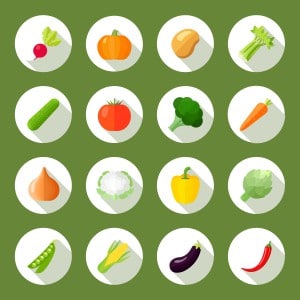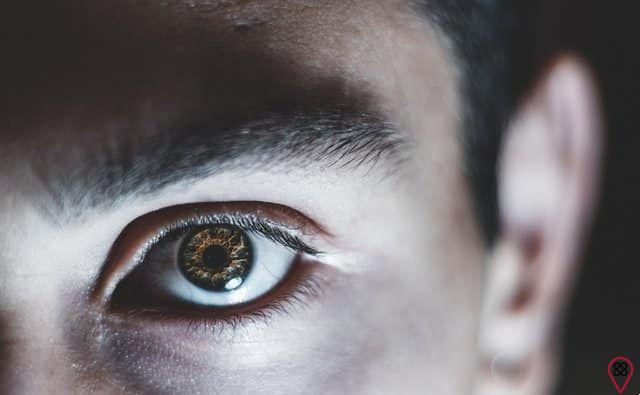Of all animals, only arthropods, cephalopods, and craniates have complex brains. Arthropods have articulated legs, which allow the execution of several different movements, facilitating the search for food and its protection. Shrimp, crab, bee and fly are examples of arthropods. Cephalopods have a large head, developed eyes, and eight or more tentacles. Octopus and squid are examples of cephalopod animals. Craniates are animals with a skull. They can be bone or cartilaginous tissue. Mammals, birds, fish, amphibians and reptiles belong to the craniantas group.
Consciousness, thought, memory and emotion. The organ allows us to identify and interpret everything around us. It is composed of gray matter and white matter. Gray matter is external to the brain, its function is to process the information we receive. It is in regions that control muscles and functions such as vision, speech, hearing, emotions and memory. Cell bodies and neurons make up the gray matter.
The cerebral cortex, the area responsible for consciousness, thinking, perception, attention, language, memory and attention, is composed of gray matter. The cerebral cortex made it possible for humans to create culture, as it allowed the development of abstract and symbolic representations.
The white mass is located inside. The white mass is made up of a fatty substance called myelin. The more information we receive, the thicker the myelin becomes. The function of the white matter is to transmit information between the various regions of the brain. The white mass retrieves useful information for complex reasoning.
The brain is divided into two hemispheres, each with five lobes. The frontal lobe is at the front of the brain (forehead). It is linked to motor activities, speech articulation, thinking and planning (cognition and memory). The motor cortex and the prefrontal cortex are part of the frontal lobe. The motor cortex regulates and coordinates voluntary motricity. The right hemisphere motor cortex controls the left side of the body. The left hemisphere motor cortex controls the right side. Trauma to the frontal lobe causes paralysis.
The parietal lobes are at the top of the brain. They are divided into two regions: anterior and posterior. The former allows the perception of touch, pain and heat. The latter analyses, interprets and integrates the data received by the former.
The occipital lobes are at the bottom of the brain and are responsible for vision. It is also called the visual cortex because it processes visual stimuli. Colors, movements, depth and distance are identified by specific areas. After passing through the primary visual area, the information goes to the secondary vision area, where the data from the areas are collated. Lesions prevent recognition of familiar faces, words and objects.
Located above the ears, the temporal lobes are divided into primary and secondary auditory areas. The sounds produced when there is stimulation of the primary area. The sounds go to the secondary area, which maintains contact with other brain areas, in this way, the person recognizes what he hears.
The brain base is made up of the basal ganglia, thalamus and hypothalamus. Such structures organize movements, reception and transmission of sensory information and automatic activities. The brain stem coordinates swallowing and heart rate. The cerebellum, the area below the brain and above the brain stem, organizes body movements.
The brain and its myths
The brain is the subject of several researches. Much has been discovered, however, there are still many myths and popular beliefs. We're sure you've heard some of them.
the brain is gray
 The gray matter and the gray color of brains preserved in formaldehyde are gray makes many people think that the brain is this color. But on the organ there are white parts, black dots and red lines. Blood and basal ganglia stain the brain.
The gray matter and the gray color of brains preserved in formaldehyde are gray makes many people think that the brain is this color. But on the organ there are white parts, black dots and red lines. Blood and basal ganglia stain the brain.
A lua influence behavior
It is believed that the expression lunatic comes from the word moon. The satellite would be associated with insanity. The myth may have arisen from the observation of police officers and health professionals, who are always faced with disturbing and intriguing situations. It only takes one or the other to happen during a full moon night to believe that behavior changes at this stage.
Listening to Mozart Increases Intelligence
The scientific journal Nature claimed that listening to Mozart increases intelligence. The volunteers, Californian university students were divided into two groups. Those who listened to the Austrian composer's songs performed slightly better. To conclude that children who listen to Mozart get smarter was a leap. In the late 90s, the US state of Georgia distributed Mozart CDs to mothers of newborn babies. Currently, it is known that listening to stimulating music before mental practices makes people excited, consequently, performance increases.
Brain has logical and creative side
The left hemisphere is seen as the logical and rational side. The law is always described as the hemisphere of intuition and creativity. But experts say this is limiting an organ as complex as the brain. The hemispheres maintain contact and work together. Fibrous cords, such as the corpus callosum, integrate the right and left sides.
Human brain is bigger
There are those who believe that the human brain is the largest of all living beings. However, this is not true. An adult's brain weighs 1,3 kg, the same measurement as a dolphin's brain. One can consider the maxim the bigger the animal, the bigger the brain.
The myths about the brain don't stop there. There is one that deserves special mention.
We only use 10% of the brain
This is the biggest of the myths. Turn and move, someone says we only use 10% of the brain. The legend began in 1936. Author Dale Carnegie, author of the books How to Win Friends and Influence People and How to Avoid Worry and Start Living, made such a claim. Another explanation would be among paranormal enthusiasts. These argue that only those who levitate, read minds and bend forks from a distance use 100% of their brain.
The idea is absurd. Functional imaging tests show that few areas of the brain cannot be stimulated. Simple activities like clasping your hands demand more than 10% of the brain. While some cells plan, others contract the muscles in the fingers and palm. Even when we do nothing, the brain is still at work, regulating breathing, heart activity and memory. Even people with hydrocephalus have an active brain.
How to turbocharge the brain?

The brain loses its capacity over the years. Alzheimer's Disease, a neuro-degenerative disease that reduces intellectual functions. The first symptom is short-term memory loss. The patient remembers things from his childhood, however, he does not remember the last meal.
Exercises. Without them, the brain can fail. American neuroscientist Larry Katz, author of the book Keep Your Brain Alive, developed neurobics. “Brain gymnastics” is about performing everyday tasks in other ways. For example, right-handers can start writing with their left hand, changing course and walking around the house on their back are exercises that preserve brain health. Having a peaceful life, without addictions and with a routine of physical activities also helps.
Food is another powerful ally. A study carried out in 2011 at the Spanish universities of Navarra and Las Palmas de Gran Canaria carried out with 12.059 people over six years proved the relationship between trans and saturated fat and depression. The academic center of Navarra reported that at the end of the research, 657 of the volunteers were depressed, no one had the disease at the beginning of the research.
Boost your brain power by eating
Omega 3 is a good fat. The substance is good for the heart and also for the brain. It cannot be missing from the menu of pregnant women, as it stimulates the nervous system of the fetus. Omega e is great for memory and can be an ally in the fight against depression. Omega 3 also increases children's ability to learn. Consuming fish 3 or 4 times a week guarantees a daily dose of 250 mg for adults and 100 mg for children. Food cannot be fried.
Foods rich in omega 3
- Sardines, salmon, trout, tilapia, herring, anchovies, mackerel, cod
- Cod liver oil
- Chia seeds: the greatest source of omega 3 that in nature
- Flax seeds
- Nuts
The B vitamins organize the transmission of information between neurons. They also fight depression and diseases of the nervous system, such as headache, epilepsy, multiple sclerosis, Parkinson's and Alzheimer's disease. See the sources of each B-complex vitamin.
- Vitamin B1: Wheat Germ, Brewer's Yeast Powder, Sunflower Seeds and Brazil Nuts
- Vitamin B2: Oat bran, beef liver almond
- Vitamin B3: Brewer's Yeast Powder, Cooked Veal Liver, Cooked Trout and Cooked Salmon
- Vitamin B5: Avocado, Sweet Potato, Mushrooms, Cooked Salmon and Peanuts
- Vitamin B6: Prune juice, tomato juice, watermelon, hazelnuts, chestnuts and raw spinach
- Vitamin B7: Cauliflower, milk, brown rice and banana
- Vitamin B9 (Folic Acid): Oranges, Broccoli, Lentils and Cooked Chicken Liver
- Vitamin B12: Cooked Salmon, Cooked Crab, Grilled Trout and Steamed Clams
 Choline builds new cell membranes and repairs damaged ones. It increases the production of acetylcholine, a substance that improves memory and facilitates learning. Whole egg, egg yolk and all seeds and grains, especially soybeans are sources of choline. Acetylcholine is a neurotransmitter responsible for memory. It is found in eggs, salmon, milk and cottage cheese.
Choline builds new cell membranes and repairs damaged ones. It increases the production of acetylcholine, a substance that improves memory and facilitates learning. Whole egg, egg yolk and all seeds and grains, especially soybeans are sources of choline. Acetylcholine is a neurotransmitter responsible for memory. It is found in eggs, salmon, milk and cottage cheese.
Phytosterols decrease the proliferation of inflammation, infections and tumors. Nuts, soybeans, corn, sunflower seeds, avocados, legumes and vegetables are sources of phytosterols. Phospholipids (including lecithin) restore structures of the nervous system and memory. All seeds and grains, especially soybeans, are sources.
Foods for the female brain
Nutritionist Pietro Migliaccio, specialist in gastroenterology and president of the Italian Society of Food Science, explains that simple carbohydrates and sugars help preserve the health of the female brain. Migliaccio reports that each phase has special needs. See which foods are essential for their brain.
in the development phase
- Milk, yogurt, cheeses
- Cereals (breads and pasta)
- Citrus fruits
- Tomatoes, peppers, dark green leafy vegetables
at any stage
- Fish rich in omega 3,
- White meat
- Beef liver: once a week
- Honey, fruit (dry and fresh)
- Milk, tryptophan helps with sleep and serenity
- Vegetables, vegetables and fruits
for menopause
- milk, yogurt
- Breakfast Cereals
- Olive oil
- Salmon, tuna, mackerel
- Dried and fresh fruits
- Raw or cooked vegetables
The human body is considered the most perfect of machines. Like any machine, it needs constant maintenance. The brain needs to be exercised permanently. Reading, crossword puzzles, running backwards, walking backwards around the house and writing with the opposite hand you are used to are some measures to keep the brain active. If you don't take care of food, better change right now. Eating well is proven to be effective for good brain health.
Having a peaceful life without stress or addictions also helps. Don't drown professional and personal hurts in alcohol and other drugs. Legal and illegal substances are comforting at first, but then we are confronted with the consequences of things we shouldn't have said or done. Skin and hair dry out, teeth weaken, liver stops working and neurons die.
If possible, adopt the practice of meditation. It is great for concentration, memory and improves emotional state. The effects can be felt in a short time. In the long run, meditation increases the amount of gray matter. Practice interferes positively in areas of the brain linked to attention, introspection and sensory processing.
Take care of your body and it will reward you. A healthy body will make you ready to face your challenges. With a healthy brain, you can take care of yourself and read, write stories, your stories. You get what you give. Deliver good things and you will get good things back.
- Written by Sumaia Santana from the Eu Sem Fronteiras Team.

























